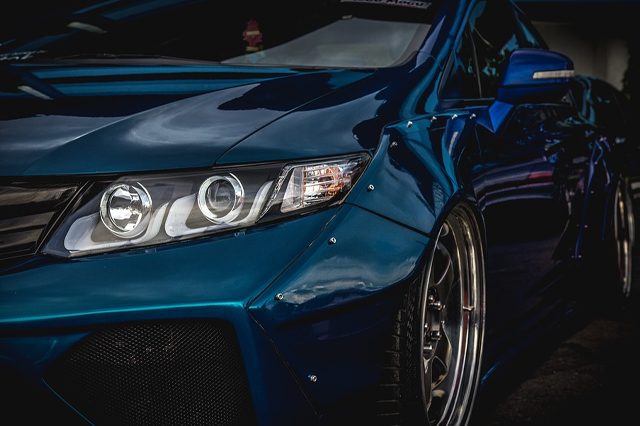Some elements of the bodywork are fixed by means of adhesives, like the stickers themselves, which means that when they are removed or disassembled from it, glue remains attached to the vehicle ‘s paint.

Removing these traces of glue can become very complicated, reaching the point that if it is not done correctly it can end up damaging the paint on your car, especially if this glue has crystallized after being exposed to the sun’s rays. Knowing how to remove glue from the bodywork without damaging it is essential, and for this we are going to explain different techniques to avoid complications and problems when getting rid of the glue.
Acrylic double-sided tapes are usually used as adhesives, used for anagrams, moldings…, in addition to there being cases in which vehicles incorporate vinyl adhesives for decorative purposes. In addition, we can also find traces of glue on the bodywork for other reasons, such as, for example, after having carried out a repair process in which they have been used, as occurs in the replacement of windows.
Instructions to remove glue from the bodywork without damaging it
If you want to know how to remove glue from the bodywork without damaging it, you will have to take into account that it is important to determine the type of adhesive that you want to remove, in order to choose the method that allows you to remove the glue in the most efficient and simple way.
In the case of vinyl adhesives, they are easily removed with heat, although there are other adhesives and glues that require other types of specific products. The points to take into account to leave the bodywork in perfect condition are the following:
- When you are going to remove a glued element and a vinyl adhesive, the procedure that works best is to heat the component or sticker with a heat gun. In this way the glue softens and loses adhesion. In liquid vinyl, heat would not be necessary to be able to remove the adhesive film easily.
- Removing an auxiliary component attached with double-sided tape sometimes requires the use of cutting-capable tools such as a putty knife. When using it, you must bear in mind that it must be used with great care. It is essential to do it this way to prevent damage to the bodywork. In this case, it is advisable to use plastic spatulas, in addition to using moderate force.
- To remove an element that is stuck correctly, it is advisable to start at one of the corners and pull in the same direction every time. This requires that you do the work calmly and patiently. Avoid jerking and use moderate force to avoid possible body damage
Once you remove an item that is stuck, it is common for adhesive residue to remain on the surface. These must be removed whenever they are visible, when it is going to be a piece that is going to be painted later or when it can interfere with subsequent assembly. In order to remove this glue, you have to be able to identify what type of adhesive it is. Based on this, the following methods will be used:
- If it is vinyl adhesive residue, it can be removed effectively with a degreasing cleaner. Avoid resorting to aggressive products such as solvents or acetone. These could damage the paint or make the surface where they are applied lose its shine. There are cases in which the use of alcohol can be used to remove those traces of glue.
- When it comes to a double-sided tape adhesive that has left residue on the bodywork, you can resort to the use of rubber or rubber discs. In these cases, resorting to a degreaser or solvent will be ineffective. These discs are highly recommended since they do not damage the paint and are very effective, in addition to being able to also be used to get rid of vinyl adhesive residues.
- To remove small traces of adhesive, in cases where the piece is going to be painted again, you can resort to sanding. In the event that it is going to be painted, the same grains that are used for this task can be used. However, if the piece is not going to be repainted, it will be necessary to opt for a 2,000 – 4,000 grit water-based sandpaper in order to carry out a smooth and fine sanding. When the remains of the adhesive are removed, a polishing process will have to be carried out to recover the brightness of the bodywork.
In this way you already know the product or element that you should use depending on the type of glue that you have on the body of your car. Hence, it is important to detect or identify it correctly before acting.















